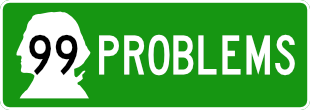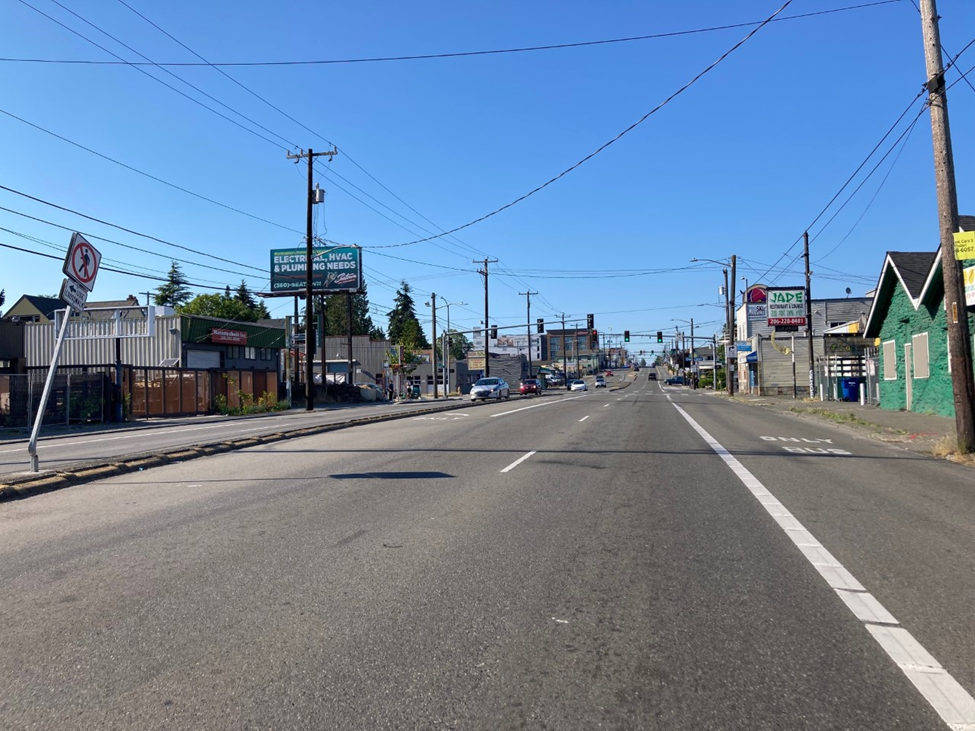The following is an article written by Coalition leader Tom Lang, in collaboration with Sandy Shettler from The Last 6,000. It was published by The Urbanist on August 4, 2022 under the title “Let’s Throw Shade on Aurora Avenue”. We encourage you to read the article on The Urbanist’s website to support its news reporting.
Let’s Make Aurora Shadier!
By Tom Lang & Sandy Shettler
Last week was hot. Walking down the street or visiting a park, it’s challenging to stay in the shade. In Seattle, the Emerald City, we’re proud of our trees. But do we have enough?
Along with smoke, we now expect to have heat waves more frequently in Seattle. So let’s all get familiar with King County’s Interactive Heat Map.
The ‘Urban Heat Island Effect’ is visible in King County’s interactive heat map
It’s clear that the places with more trees - and less concrete - are cooler. Along Aurora, the heat island effect lines up almost perfectly with the urban village boundaries. Some of the hottest places in North Seattle are on Aurora, and it’s no mystery why. Street trees are scarce.
Many parts of Aurora Ave N lack any trees at all. [photo courtesy of Sandy Shettler]
Long stretches of Aurora have nothing but concrete and cars. We need more trees to help absorb the sun’s rays and to provide shady places to walk and sit. A tree’s shade canopy can offer a 10 - 15 degree lower temperature - the difference between a pleasant walk or a painful one. Trees even emanate cool air for several feet beyond their canopy. This cooling air and shade can be the difference between people moving outside safely during the day versus taking refuge inside cars and buildings until the sun sets.
With no bus shelter, the shade these trees provide is critical. [photo courtesy of Doug McDonald]
So it should shock you to find out that the Seattle Department of Transportation is considering the removal of almost all the trees in the Licton Springs section of Aurora, as part of a sidewalk repair project between N 80th and 105th Streets. To be sure, the sidewalk uplift in this section of Aurora is awful and completely inconsistent with Seattle’s commitment to accessibility. But surely we can make our sidewalks accessible AND preserve the limited tree canopy we have?
Aurora Needs Its Big Trees
When tackling a sidewalk project, SDOT has historically removed large street trees, done the construction, and then replanted. This no longer works in our hottest urban cores, given the decades needed before any replacement trees become big enough to provide the same shade we enjoy right now. The reality of our changing climate requires a change in approach.
Awareness of the value of our urban tree canopy is spurring communities to design sidewalks creatively around their big trees. While other cities are ahead of Seattle in doing this at scale, SDOT’s engineers do have experience designing new sidewalks around trees on smaller projects, in West Seattle for example.
A creative solution to installing accessible sidewalks while keeping our valuable street trees, at Fauntleroy Way SW and SW Fontanelle Street [Photo courtesy of Sara Macko]
Aurora’s sweetgums (liquidambar styraciflua) have been criticized for dramatically lifting the sidewalk around their roots. This heaving is actually due to the“tree coffins” they were planted in years ago. Arborists use this term to describe the 3’ x 3’ boxes sidewalk designers of yesteryear optimistically selected, which we now know are only suitable for bushes and dwarf trees, not the shade trees Aurora needs. Sweetgums were and are a great choice as a street tree, prized across the country for resilience, graceful form, and tolerance of pollution.
Give these big trees more room to grow! [Photo courtesy of Sandy Shettler]
With sidewalk construction, expansion, and improvement most likely coming to the area as part of the Aurora Ave Project, SDOT can use this opportunity to add soil volume and grading, which will support the continued health of these trees as well as new large trees which should be added.
Sadly, street trees do not currently seem to be a priority at SDOT. Take a look at the new bike and pedestrian crossing at Aurora and N 83rd Street. A safety improvement, for sure, but not a single tree planted. How can we guarantee that trees will be top of mind whenever a new street project is being designed?
New project, but not a tree in sight. [Photo courtesy of Doug McDonald]
New Leadership Brings New Opportunities
It was encouraging last week to learn that Mayor Harrell’s pick for new director of SDOT is Greg Spotts, a veteran transportation leader in Los Angeles who will “view every decision through a climate lens, and build a transportation system centered on equity, quality infrastructure, and multi-modal solutions.” Using a climate lens, it shouldn’t be difficult to see the value in using Aurora Avenue’s public space as a way to expand our urban tree canopy. Trees can mitigate the deadly effects of climate change, and will also sequester more carbon and hopefully reverse climate change in some small but incremental way.
While in LA, Spotts helped to secure “more than $50M for new investments in underserved communities, including mobility improvements, tree planting, solar-reflective pavement coatings to reduce urban heat, and new median islands featuring native plants that support biodiversity.” This is great, and bodes well for Seattle’s Department of Transportation. The Aurora Reimagined Coalition has an actionable idea to continue this work here in the Northwest.
Street-End Plazas
Creating plazas for trees and community open space could boost Aurora’s tree canopy. Closing half of a residential street-end has already been proven to increase open space by the Stay Healthy Street program. A simple orange barricade limited cut-through traffic on select residential streets and reintroduced public land for community purposes. We propose a permanent version of this: a Street-End Plaza - a permanent closure of one-half of the right of way that creates more space to plant trees, build parks, or place bike and scooter parking corrals. Not only would Street-End Plazas create more open space for people, they would also support Vision Zero goals by reducing cut-through traffic in our residential neighborhoods, many of which still lack sidewalks.
Street-End Plazas were actually first proposed by the City in a 2009 Land Use and Visioning Study for the small business district on Aurora Ave just north of Green Lake. Intended as improvements to E-Line bus stops, these tiny parklets could host hundreds of trees up and down the corridor and provide more space for people to stay cool in the summer and enjoy Aurora, rather than avoid it. You can experience a Street-End Plaza on the west side of Aurora at N 84th Street.
An example of a Street-End Plaza, at Aurora Ave N and N 84th Street.
We know that big trees and the shade, noise reduction, and air filtration they provide help create community spaces where people are likely to linger. Removing trees has the opposite impact. Today, most of Aurora Avenue offers only exposed sidewalks next to moving cars, under the beating sun. In the future, we envision a tree-lined, more inviting Aurora that will help draw people out of their cars and create a friendlier, more livable atmosphere.
As we collectively face a hotter future that guarantees summer heatwaves every year, the question before us is: do we invest in large-scale, community cooling centers, or do we instead let nature do the work for us? Let’s carve out public space now with the future in mind. Cherishing our existing street trees and planting more trees will give us the chance to reclaim a bit of our Emerald City status.








